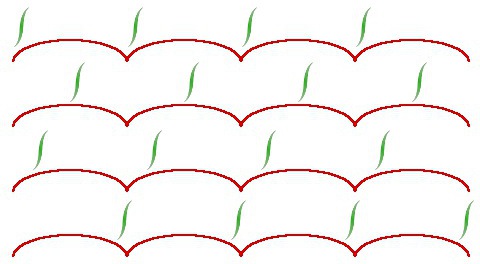Timing the 'Fwoof'
In
relation to footfall
OK -- what's a 'Fwoof?!' Well -- it's
made up! And you'll want to make up your word, too.
It's whatever word represents for you the moment when you
choose to engage the Alexander Process. Cathy Madden
has proposed that finding a new word for your moment of
engagement allows you to escape some of your past concepts
and I have found this liberating.
"We need a word to represent
this moment of choice. In my experience, it works
best to invent a word for this process. Any word that we
already know carries our past meanings with it. If
we want to embrace learning something new, it works best
to have a new word, one that has no previous associations
with it, one that we create meaning for by our discoveries
in class."
Madden 2012:87 p26
Onstage Syndery
Integrative Alexander Technique Practive for Performing
Artists
|
It is all to easy to get
into the habit of reciting something and not doing anything
at all. Specifically, the head may be singing along
'float the head, free the neck, float the head, free the
neck' (kind of like a song in the Pirates of the Caribbean
"part of the crew, part of the ship") and
meanwhile, absolutely nothing is happening with the head,
the neck, the body, or anything else. It's simply a
little ditty running along lulling the audience into
thinking or imagining something has been
accomplished.
So along with a new word, it is, I feel, also
important to find new and fresh ways of observation so that
the feedback loop stays fresh. One of the ways
to do this is to ask questions -- how much have I fwoofed?
was it a big fwoof? like a 10? or a small one,
like a 2? or a 0? or, (ack) was that like an
anti-fwoof where I scrunched my head into my spine?! how
far did it travel in my body? what parts of me
responded? did my breathing deepen? become
shallower? quit? What happened with that jiggle
in the middle of my back? bigger/smaller/etc.
How was my vertical axis influenced? What did my legs
do? Tighter/looser/lighter/heavier?
It's important to ask all kinds of questions -- not
just what you hope to find but also what you may not want
to. Learning is accomplished through change, discernment
and connecting the dots. If things don't change,
there's no dots to form a pattern. (It's probably
also a good bet you're listening to a tape that has lost
it's meaning!) Or, if we're not aware of what's
changing or how, we have lost the feedback loop and can't
get enough dots to form a pattern. Without the
feedback loop, and no dots, no connections can be
made and no learning takes place. Which is
dull.
So for fun, I played today with when to 'fwoof' in
relation to footfalls. (In a previous article I've
shared that one of the images that has helped me is that of
a cat springing.)
While walking, some of the timing I played with for
fwoofing was when my foot met the ground, when it was midflight,
when it was leaving the ground, and when it was about to
meet the ground. Here's a sort of picture of the arc
of the foot swing in red and the fwoof in green, moving
left to right.

There is also the consideration of having two feet and
coordinating the timing for both. Then, when you
are on a horse, the movement of the foot is similar to the
movement of the hind feet.
The beauty of this is that you can do it anytime you are
walking and it will translate into your riding.
Play with it! Let me know how it goes! I'd
love to hear from you.
L
|
|
Are you looking for something more in your riding?
Something that really connects the inside and the outside?
Sometimes a hands on experience can do a lot to clarify
something written.
I've studied horse and human anatomy for twenty five years.
I started with Centered Riding and that is solidly based upon
how bodies work and how brains process information. I
know Alexander, Feldenkrais, Trigger Point, myofascial, Ortho-bionomy,
how to develop resistance training programs, and more recently
I am incorporating concepts from Body-Mind-Centering.
I've done yoga for more than forty years, studied (and used)
the chakra and meridian systems for over twenty.
Sometimes I don't go into theory because in the middle of a
lesson it would detract from the practical learning of how to
ride, but I do clinics where I share this information along
with how to incorporate it into your training program.
And if you really don't mind listening to me yak forever, I
can easily do that during a lesson, too. It's just most
folks want to ride!
|